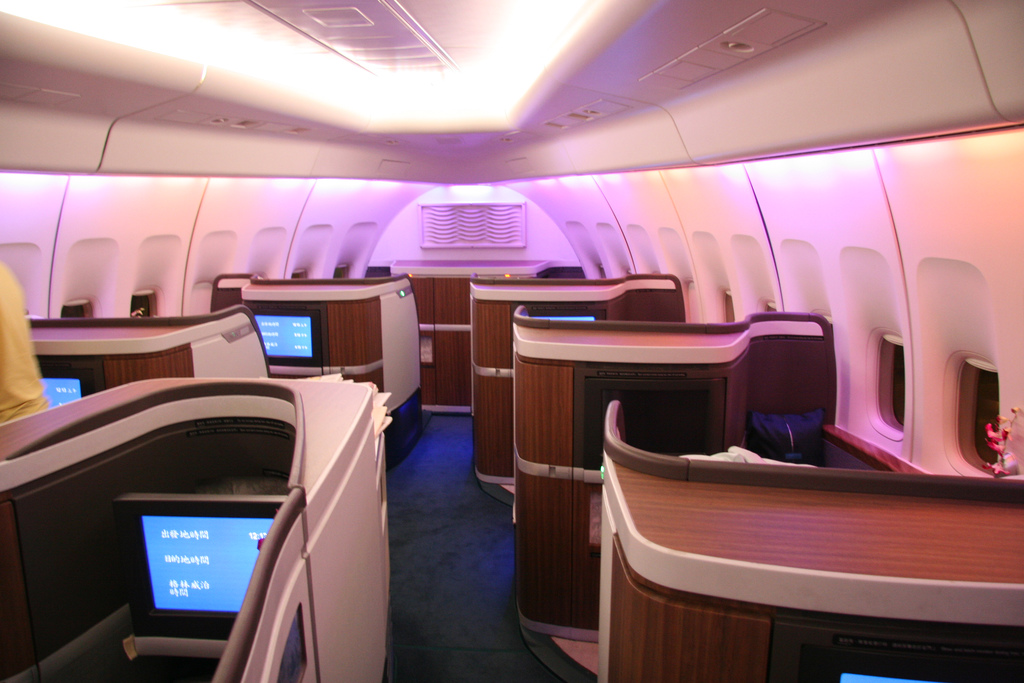How First Class Passengers Are Ruining Air Travel.

Here’s a true story: I was waiting at the gate for a 6 AM flight out of Dallas Fort-Worth. The crew was running behind, and my fellow passengers and I had been up since the crack of dawn. None of the regular airport amenities were open at that hour, and we were getting annoyed. “No one’s allowed to board yet,” said the gate agent. So there we were, crowded around the open door as anxious passengers are wont to do, whenSkrillex and his entourage rolled up on hoverboards and scooted right onto the plane.
I wanted to strangle him all the way to JFK.
“Air rage”—disruptive or violent behavior directed at flight attendants or other passengers—is a very real concern for flight staff.
The ever-growing threat of aggrieved and vengeful passengers was what prompted a new study, published today in the Proceedings of the National Academy of Sciences, that investigated the impacts of cabin segregation on air rage. As it turns out, the hatred you might feel for first-class flyers is a common symptom of airline classism, and a primary cause for air rage. On a psychological scale, the mere presence of first-class flyers can be equivalent to a flight delay of 9 hours and 29 minutes.
Plane cabins are microcosms of social stratification. “Elite flyers” are not only entitled to more attentive hospitality and better perks, they also physically occupy a restricted, exclusive part of the plane. Economy passengers are privy to baseline services andless expensive seats, which they’re further reminded of as they shuffle past the first-class section’s leather loungers and ample legroom while boarding.
In a socioeconomic hierarchy, a person’s class can affect their health, well-being, emotions, and behavior. And, as the study’s authors were able to confirm, that hierarchy can manifest in small-scale environments, such as airplanes, while eliciting the same critical outcomes.
“I study crime and organizational behavior, so I’m naturally interested in inequality and justice. Flying and airports just make the class war so apparent to people,” the study’s lead author Katherine DeCelles, an associate professor of organizational behavior at the University of Toronto, told me.
DeCelles and her colleague investigated several years of anonymized passenger data made accessible to them by a large international airline company. The variables the team analyzed were air rage incidents, seating class, gate location, flight delays, and travel distance.
On planes, inequality manifests in two forms: physical and situational. Physical inequality stems from passengers being placed into stratified classes within the cabin. Situational inequality, on the other hand, is the reminder of one’s status: so, for example, coach flyers having to walk through first-class on their way to their seats.
The research team discovered that air rage incidents among economy passengers were nearly 400 percent more common on planes with first-class service.
People sitting in coach were more prone to emotional outbursts involving fear and anxiety, while first-class customers more frequently exhibited belligerent and angry behavior.
Aircraft with boarding zones at the front of the cabin also compounded physical inequality, the study’s findings show. Reports of air rage on planes that required economy flyers to pass by first-class passengers during the boarding process were significantly more common than on planes that allowed them to board from the middle. On planes with a single entrance, air rage in coach was 200 percent greater, and a whopping 1100 percent higher among first-class passengers who seemed even more peeved at the rubbing of elbows than their peers in economy.
According to DeCelles, higher social class individuals often make downward comparisons to the less privileged when reminded of their elite status, which is evidenced by selfish, scornful, and entitled behavior. She believes this could explain the spike in disruptive conduct among first-class flyers when forced to acknowledge economy passengers.
It’s clear there’s a class war being waged up in the sky, and anyone who’s ever flown in coach probably knows that. But, as the study suggests, there are things airline companies can do to reduce the friction created by growing passenger class divides.
“Behavioral solutions can be implemented, and airlines are definitely experimenting with boarding patterns and double gates,” DeCelles said. “But things like curtain dividers, blocking off access to washrooms, and even the smell of freshly baked cookies from first-class can remind people of their social situation.”
With shrinking seats and more expensive flights, air rage is bound to get worse. I suppose we’ll all have to find ways to cope with the injustice of flying. It helps to remember that traveling is still a luxury and a privilege. And besides, no matter how comfortable those first-class seats may be, the in-flight WiFi still sucks for everyone.
How First Class Passengers Are Ruining Air Travel.
![How First Class Passengers Are Ruining Air Travel.]() Reviewed by Unknown
on
13:50:00
Rating:
Reviewed by Unknown
on
13:50:00
Rating:
No comments: